Physical Address
304 North Cardinal St.
Dorchester Center, MA 02124
The natural spinal curvature allows for horizontal gaze while standing in an upright position. The development and maintenance of spinal anatomy and posture are dynamic and vary by individual.
Beyond the craniocervical junction, there are seven major spinal ligaments that work to stabilize the subaxial spine in its physiological range of motion. These ligaments also work to restrict the motion of the spine to well-defined limits, while at the same time allowing adequate motion and fixed postures to protect the spinal cord.
The intricate design of the vertebra functions to provide stability to the spinal column, along with support and protection for the spinal cord and associated nerve roots. The compressive forces are significant in a stacked column, and the cortical lamellae are arranged vertically to aid in resisting these forces.
The musculature of the back is crucial to balancing the forces placed on the vertebral column. Weakness of the muscle groups that support the spine can lead to deformity or pain. The musculature plays a significant role in spine stability. Disuse or denervation atrophy can result in deformity, degeneration, or other painful pathology.
The human spine is a complex structure that relies on biomechanical harmony to perform appropriately. It is comprised of bone, cartilage, joints, ligaments, muscles, and neural elements. All these structures work together dynamically to achieve the fundamental purposes of the spine. This chapter provides a basis of understanding the functional anatomy of the spine. This basis is important for further knowledge on how different pathologies, as well as different interventions including instrumentation, affect the spine as a whole.
The human spinal column consists of 33 vertebrae separated into five anatomic regions. These regions include seven cervical (C1‒C7), twelve thoracic (T1‒T12), five lumbar (L1‒L5), five sacral (S1‒S5), and four coccygeal bones ( Fig. 4.1 ). The spine develops largely in utero. The primary curves develop during this time: kyphosis in the thoracic and sacral regions. These curves are created by wedge-shaped vertebral bodies, where the anterior height of the body is less than the posterior height. Late in utero, after the development of the primary curvatures and continuing through early childhood, the secondary curvatures of the spine develop ( Fig. 4.2 ). These curves, lordosis in the cervical and lumbar regions, become significant because of the gravitational forces created by the weight of the head and upright posture. The cervical and lumbar curves are created by wedge-shaped intervertebral discs, where the anterior height of the disc is greater than the posterior height. All four of these normal curves occur in the sagittal plane. There are no standard curves in the coronal plane. The neutral positions taken by normal spinal curvature allow for a horizontal gaze while standing in an upright position, increased flexibility, and shock absorbance. The development and maintenance of spinal anatomy and posture are dynamic and vary by individual. Variations between intervertebral discs and vertebral bodies can be potentiated by congenital anomalies, age-dependent vertebral changes and osteophyte formation, traumatic injuries, neurological disorders, and paraspinal muscle imbalances. These variations can result in spinal imbalance and pathology. Given the flexibility and dynamic nature of the spine, there is a significant capacity to compensate for abnormalities or deformities.
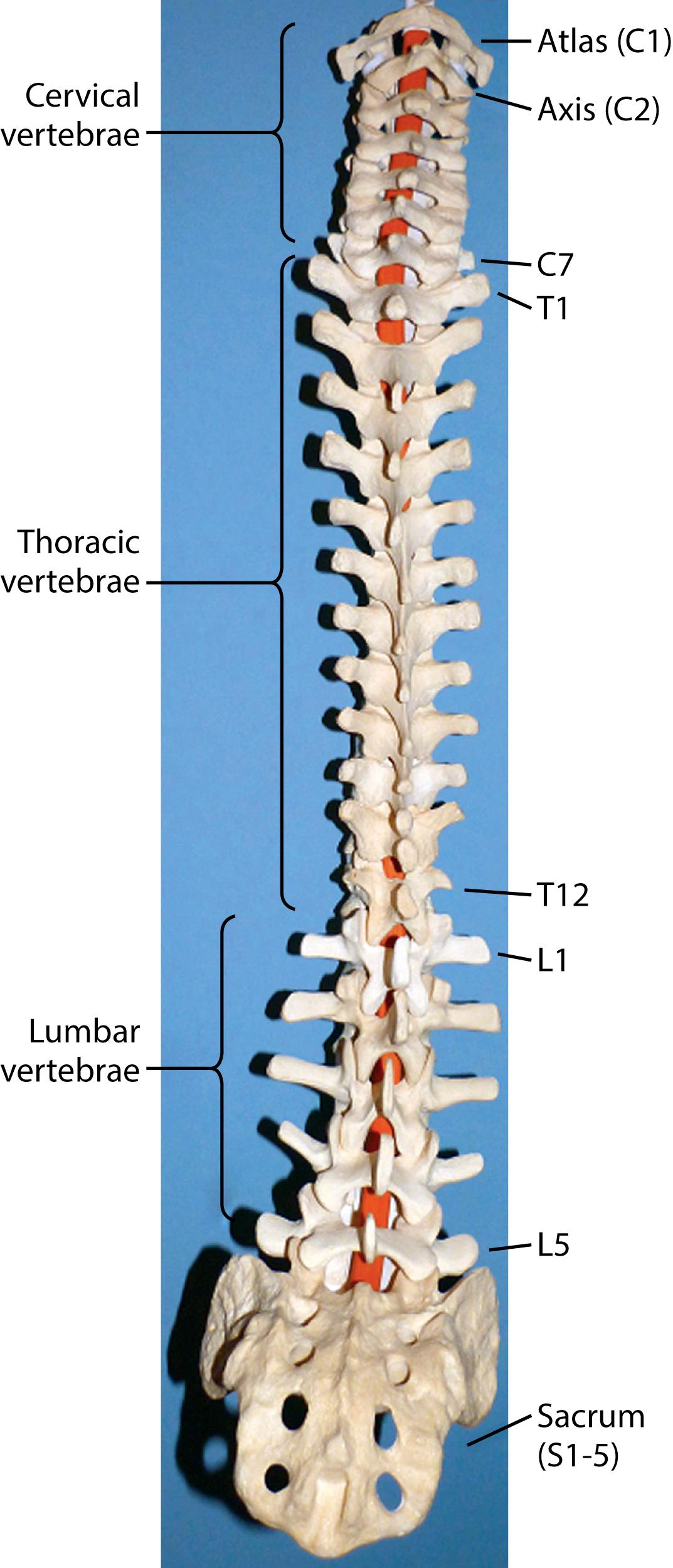
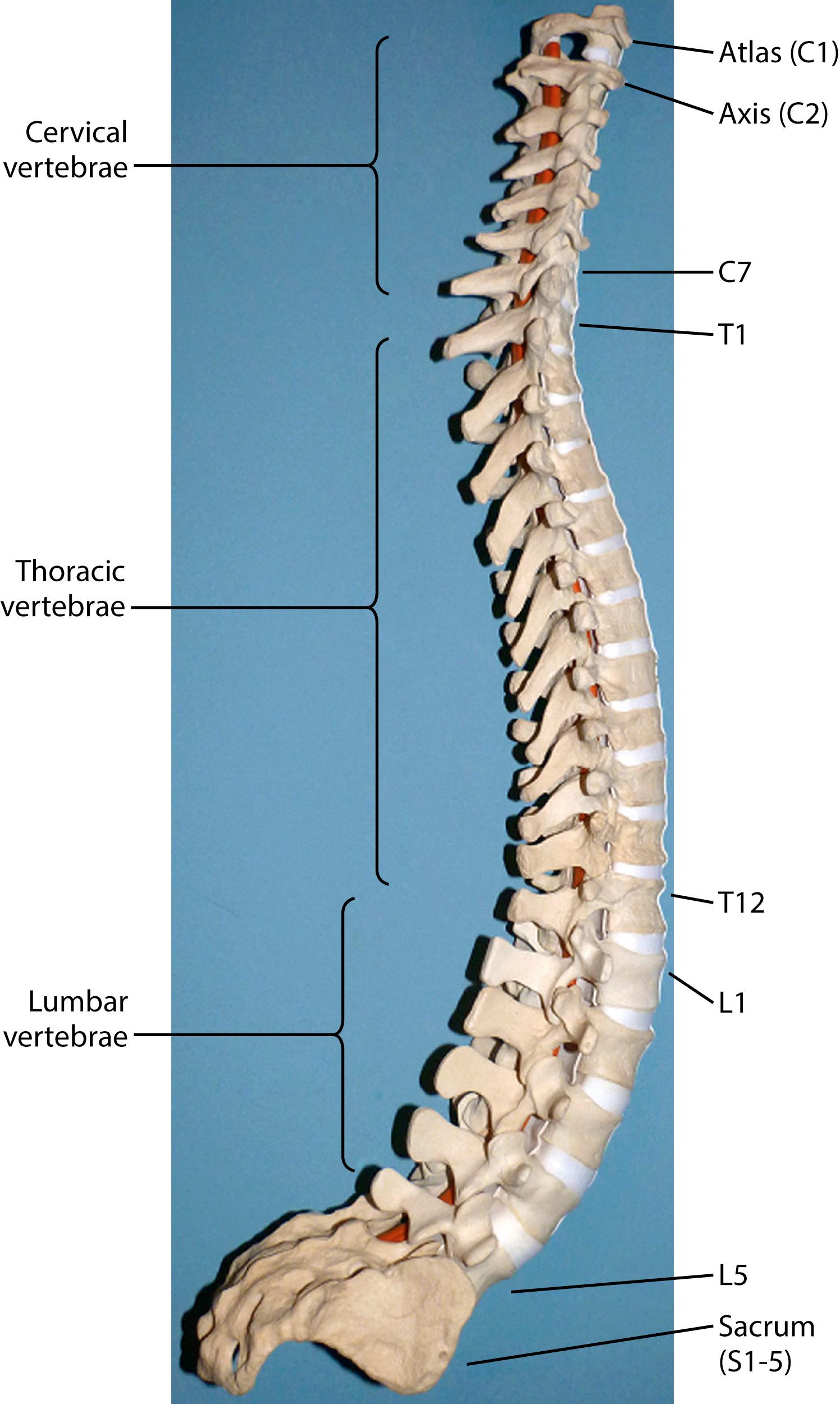
The spinal vertebrae contribute most of the bulk and strength of the spine. The intricate design of the vertebrae functions to provide stability to the spinal column, along with support and protection for the spinal cord and associated nerve roots. The compressive forces are significant in a stacked column, and the cortical lamellae are arranged vertically to aid in resisting these forces. The cancellous bone found in the inner trabeculae allows for a compromise between strong mechanical support and limiting vertebral weight. All of the structures coincident with the vertebral bodies act to bear weight in compression. The anterior column functions to transfer body weight to the pelvis while standing in an erect posture. Owing to its function in load bearing, vertebral bodies increase in size from the cervical to the lumbar region. Vertebral end plates, comprised of approximately 1.3 mm of cortical bone, are strongest in the peripheries and weakest in the center. Dorsal elements of the spinal column serve to protect the spinal cord. The dorsal elements also function as a tension band and a lever, transferring muscular contractions of the paraspinal musculature through the anterior and middle columns of the spine. The dorsal bony elements include the pedicles, which arise from the superior aspect of the vertebral body and form the lateral walls of the spinal canal. From the cervical to midthoracic region, the transverse pedicle width gradually decreases, and it then increases from the midthoracic to the lumbar region ( Fig. 4.3 ). Sagittal pedicle width increases from the cervical to the thoracolumbar region and then decreases in the lumbar region ( Fig. 4.4 ). From the cervical to the thoracolumbar region, the transverse pedicle angle decreases, and it increases into the lumbar region ( Fig. 4.5 ). The sagittal pedicle angle is a final consideration with regard to pedicle anatomy; it becomes fairly steep in the thoracic and thoracolumbar regions ( Fig. 4.6 ). The laminae extend from the pars interarticularis and fuse to form the dorsal wall of the spinal column. The junction of the laminae, where the spinous processes arise, supports the functional stability of the spine with their ligamentous and muscular attachments. The relationship between the transverse processes and the dorsal elements is unique to the specific spinal region where they are found. Each spinal segment is connected to the next segment by bilateral facet joints. The anatomy of facet joints vary by region of the spine, as do their purpose. The facet joints are dynamic in their load bearing, with increased load in extension versus flexion.
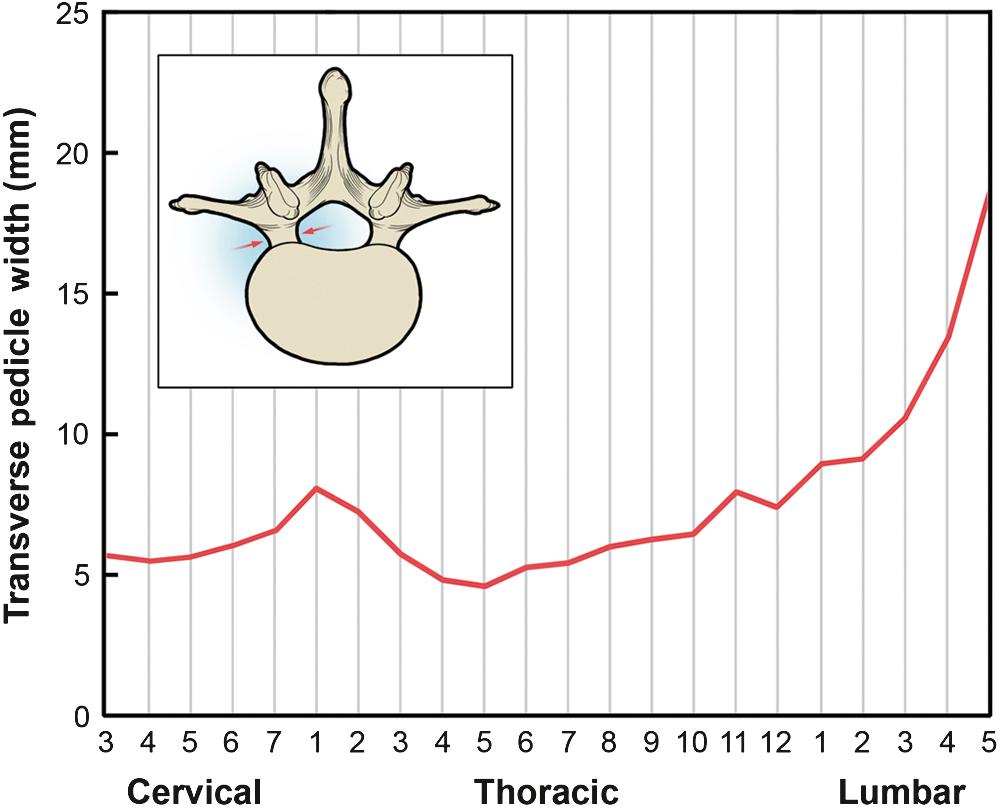
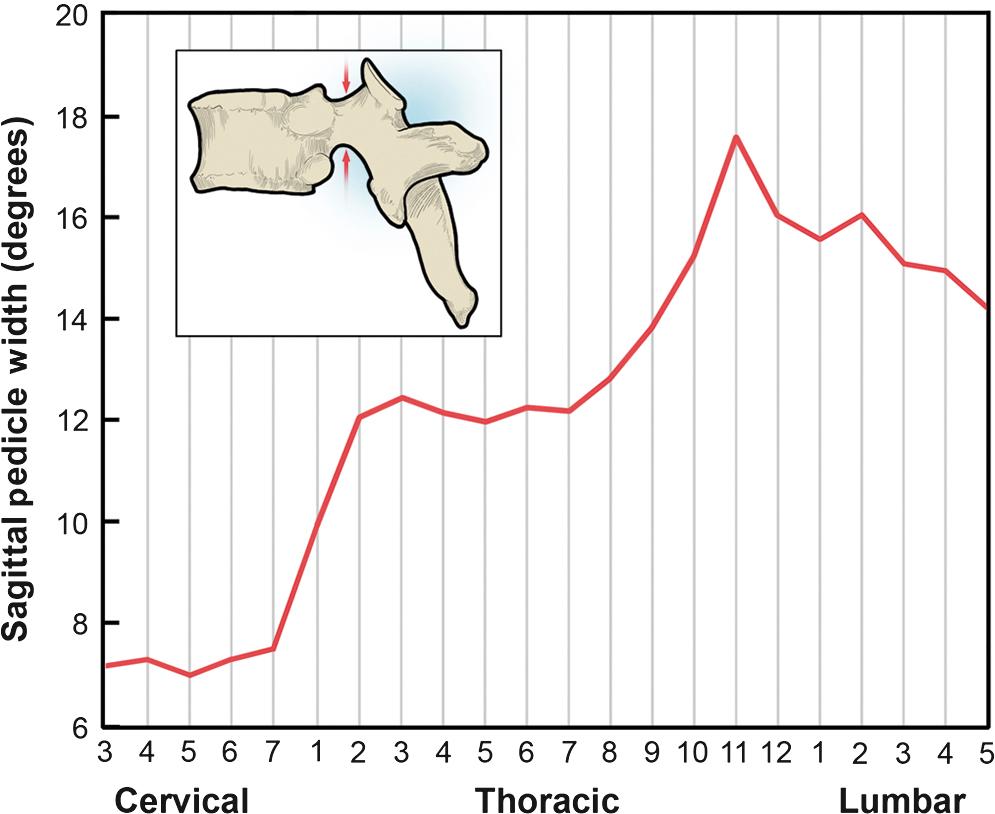
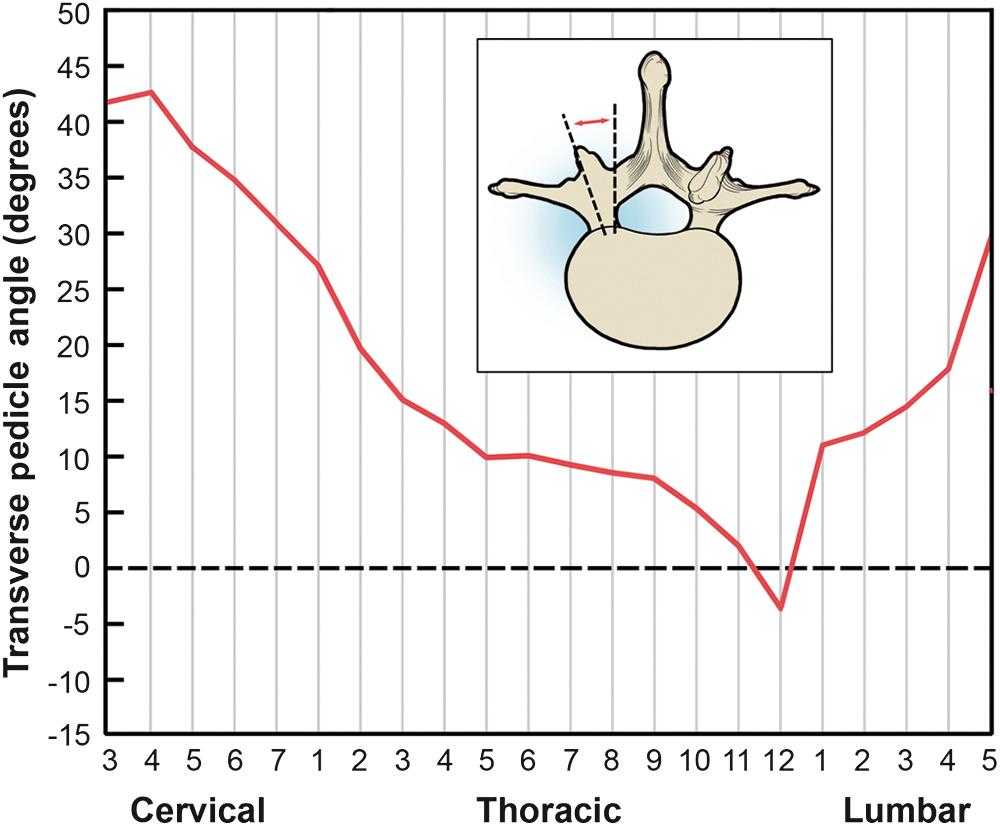
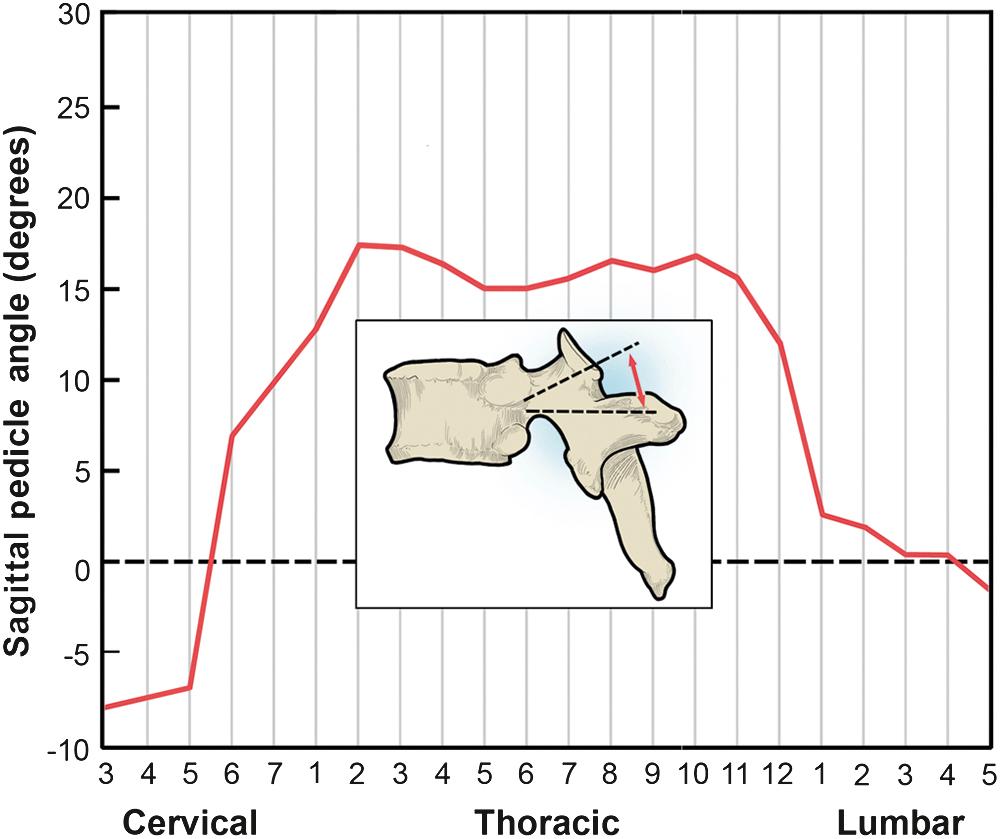
The first cervical vertebra is unique in its articulation with the occipital condyle of the cranium. This articulation is the basis for significant flexion and extension of the head. Another unique aspect of the atlas is that it lacks a true ventral body, yet it still supports the cranium by the superior facet surfaces of the lateral masses ( Fig. 4.7A ). The caudal facet surfaces of the lateral mass articulate with the superior facets of the axis (see Fig. 4.7B ). The transverse process of the atlas houses the vertebral artery within the transverse foramina. Superior and inferior oblique muscles attach to the cranium and axis. The anterior and posterior occipital membranes attach to the atlas and also contribute to stability. They are continuations of the anterior longitudinal ligament (ALL) and ligamentum flavum, respectively. The axis is the second cervical vertebra and functions to provide upper cervical rotation and stability to the upper cervical region. The articulation between the atlas and axis, known as the atlantoaxial joint, contributes to most of the cervical rotation. Unlike the atlas, the axis does have a true vertebral body and a unique structure known as the odontoid process projecting cranially from the dorsal aspect of the vertebral body ( Fig. 4.8 ). The alar, cruciform, and transverse ligaments are anchored by the odontoid process. Further stability of the cervical region is contributed by the muscular attachments at the spinous process of the axis, which include the rectus major and inferior oblique muscles. Like the atlas, a transverse foramen encases the vertebral artery. Ligamentous anatomy of the high cervical spine is unique, providing support for the head and maintaining stability despite the tremendous flexibility of the region. Ligaments exist both within and outside of the spinal canal. Much of the stability of the craniocervical region is provided by the ligaments with the spinal canal, which are ventral to the spinal cord. These are arranged in three layers. The tectorial membrane is the most dorsal of these ligaments and is a continuation of the posterior longitudinal ligament (PLL), attaching dorsally to the cruciate ligament at the basiocciput. The cruciate ligament is the middle layer and functions to constrain ventral translation between C1 and C2. It is a complex ligament with both horizontal and vertical bands. The odontoid ligament, or apical ligament, is the most ventral of the inner ligaments and extends from the lateral condyles. Outside of the spinal canal are fibroelastic bands extending from the foramen magnum to C1. From the ventral portion of the foramen magnum extends the anterior atlantooccipital membrane. From the dorsal foramen magnum arises the posterior atlantooccipital membrane. Because these are thin bands, their contribution to the strength of the cervical spine is limited.
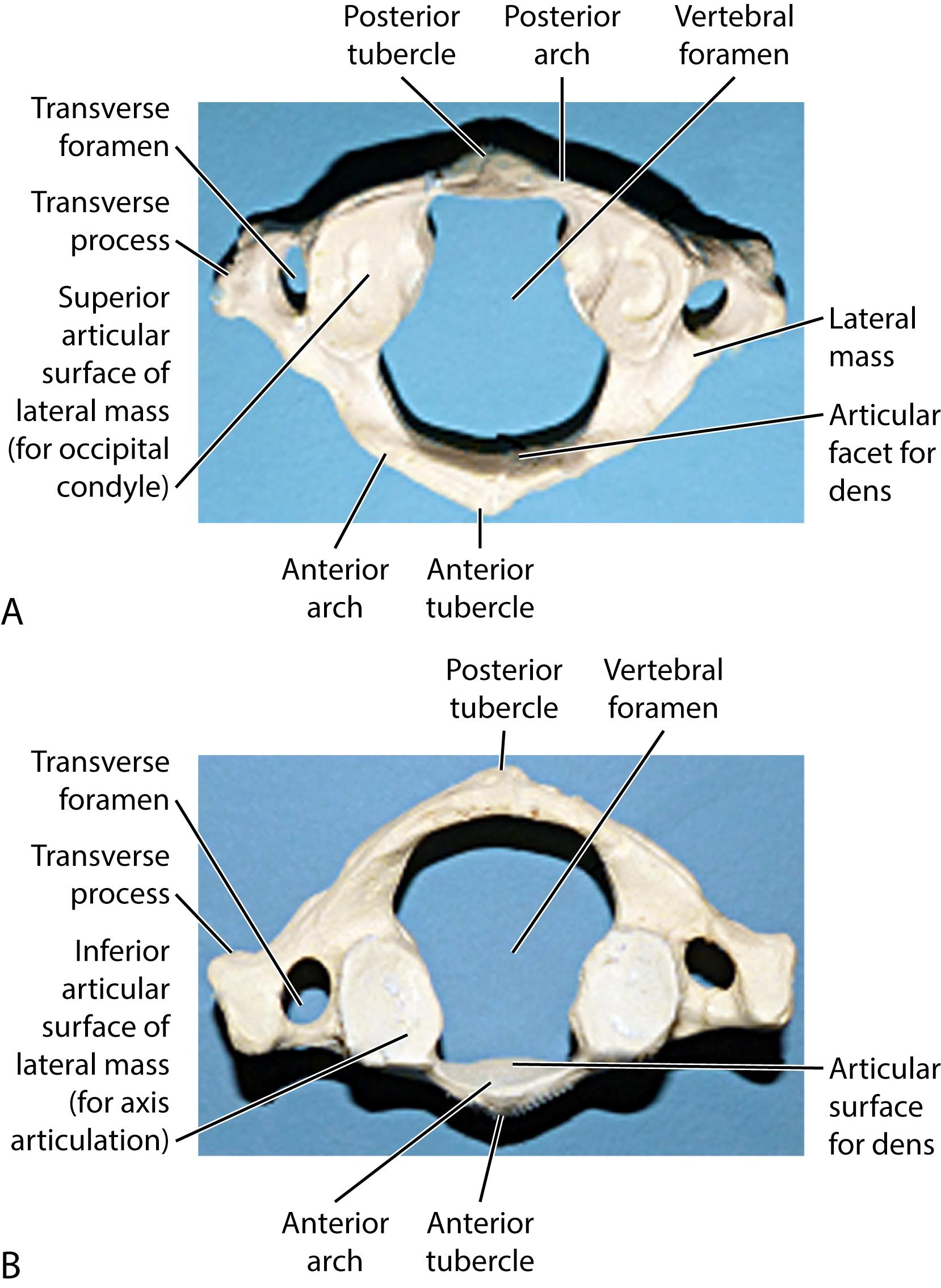
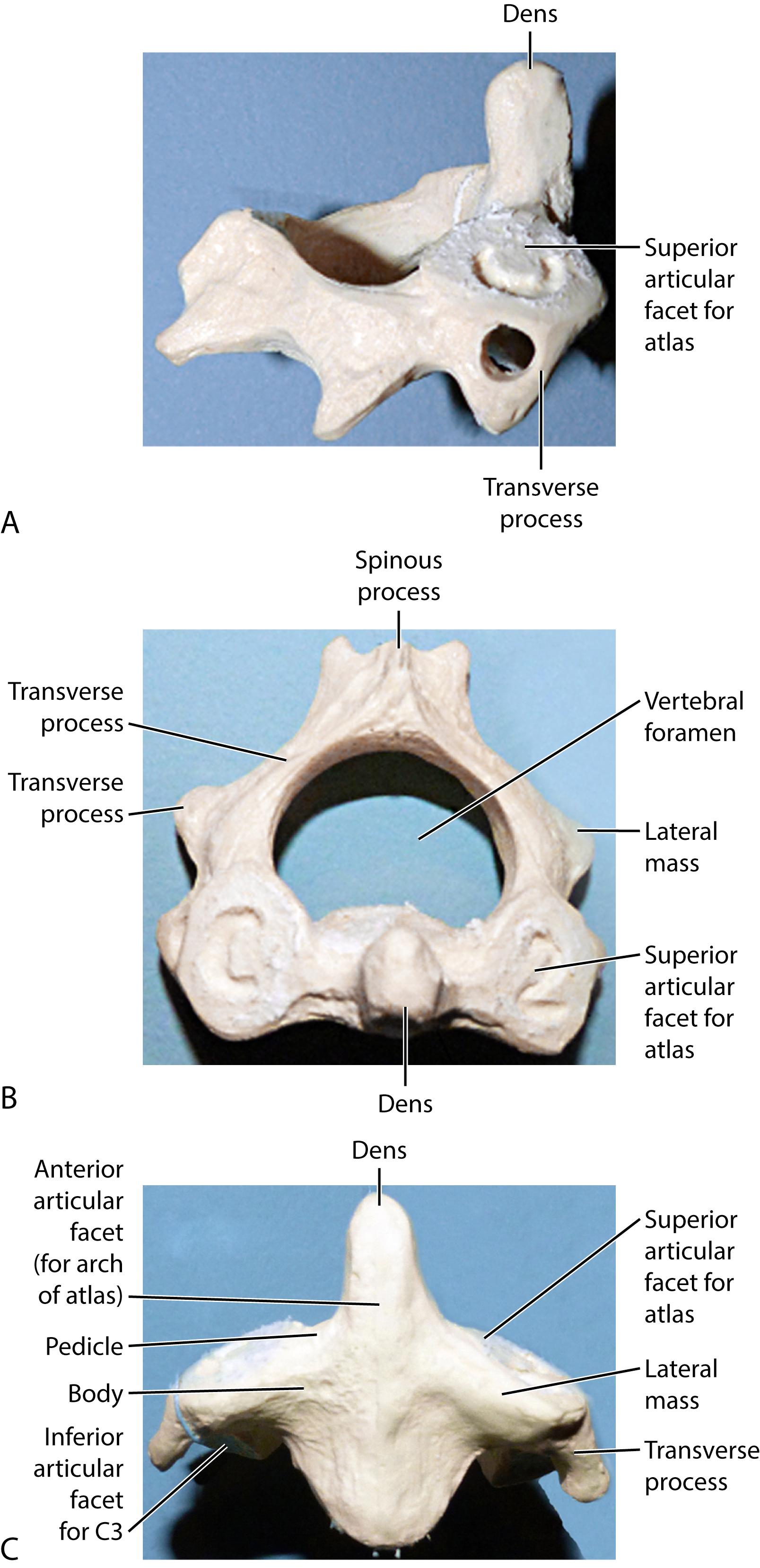
Become a Clinical Tree membership for Full access and enjoy Unlimited articles
If you are a member. Log in here